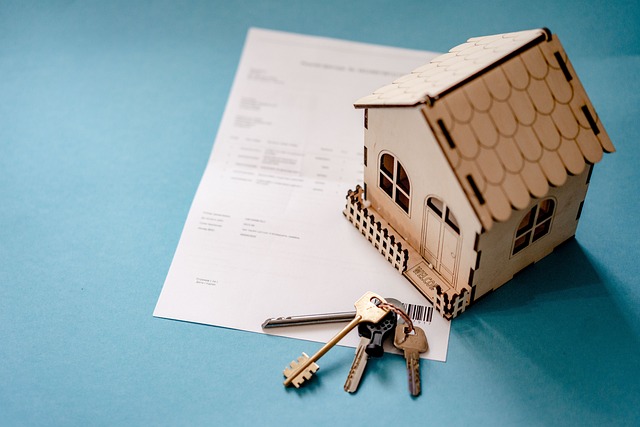Property insurance protects against financial loss due to property damage or theft, with policies covering buildings and belongings against perils like fire, storms, and theft. Quotes are influenced by location, property value, age, and interior assets, requiring accurate information for tailored coverage. Compare offers from multiple providers, understanding standard and specialized options. Regular maintenance reduces claims and premiums. Thoroughly review policy details and seek competitive quotes to find suitable protection aligned with personal needs and risks. Familiarize yourself with the claim process to efficiently navigate losses.
Looking to protect your investment and safeguard against unforeseen events? Understanding property insurance quotes is essential in today’s uncertain world. This comprehensive guide delves into the intricacies of property insurance, offering insights on key factors influencing quotes, accurate estimate calculation, coverage types, policy comparison tips, cost reduction strategies, common mistakes to avoid, and provider selection criteria. By following these steps, you can navigate the process confidently, ensuring adequate protection for your valuable assets.
Understanding Property Insurance Basics

Property insurance is a safety net that protects individuals and businesses from financial loss in the event of property damage or theft. It’s a contract between the policyholder and an insurance company, where the latter agrees to compensate for covered losses against specified perils. This type of insurance is crucial as it provides financial security, ensuring that repairs or replacements can be made without incurring substantial out-of-pocket expenses.
When considering property insurance quotes, understanding basic coverage terms is essential. Policies typically cover structures like buildings and homes, as well as personal belongings inside. Common perils include fire, storms, theft, and vandalism. Policyholders can customize their coverage by selecting specific add-ons to cater to unique needs, such as flood or earthquake protection. Knowing these basics equips individuals and businesses to make informed decisions when choosing the right property insurance policy.
Factors Affecting Property Insurance Quotes

Several key factors significantly influence property insurance quotes. One of the primary considerations is the location of the property. Areas prone to natural disasters like hurricanes, floods, or wildfires typically command higher premiums due to increased risk. For instance, homes in coastal regions often face higher costs because of the potential for storm surges and rising sea levels.
Another critical factor is the property’s value and age. Insurers assess the replacement cost of a structure, which includes architectural design, materials used, and its age. Older properties may require more extensive repairs, leading to higher quotes. Additionally, valuable items inside the property, such as art collections or high-end appliances, can also affect the overall insurance cost.
Getting Accurate Home Insurance Estimates

When it comes to property insurance quotes, getting accurate estimates is paramount for ensuring adequate coverage and avoiding overpaying. The first step in this process involves gathering comprehensive information about your home and its contents. This includes details like square footage, year of construction, roofing material, security features, and a detailed inventory of valuables. Many insurance companies now offer online tools that streamline this initial phase by guiding users through a series of questions to input these specifics.
Once you’ve submitted the necessary data, underwriters at the insurance company will assess your application, taking into account factors like your location (including regional risk assessment), claim history, and creditworthiness. They’ll then use sophisticated algorithms and industry benchmarks to generate property insurance quotes tailored to your specific needs and risk profile. It’s crucial to compare offers from multiple providers, as coverage options, deductibles, and pricing can vary significantly between insurers.
Types of Coverage: What's Included?

When considering property insurance quotes, understanding the types of coverage available is key. Typically, property insurance protects against physical damage to your dwelling and other structures on your property, as well as loss or damage to personal belongings due to covered perils such as fire, theft, vandalism, and natural disasters like floods or earthquakes.
Different policies offer varying levels of coverage. Some may include additional protections like liability coverage, which shields you from financial responsibility for accidents or injuries happening on your property, or specific coverage for valuable items like jewelry or fine art. Exploring these options ensures that your property insurance reflects the unique needs and value of your home and belongings.
How to Compare Property Insurance Policies

When comparing property insurance policies, the first step is to understand your needs. Assess the value of your property, including its structure and belongings, as well as any specific risks in your area such as natural disasters or crime rates. This will help you determine the appropriate coverage limits.
Next, review the policy details closely. Pay attention to exclusions, which are circumstances not covered by the insurance, and ensure they align with your expectations. Compare policies based on factors like premium cost, deductibles, and coverage options. Opting for a higher deductible can lead to lower premiums, but it’s crucial to consider if you’re comfortable with the potential out-of-pocket expenses in case of a claim.
Tips for Lowering Your Property Insurance Costs

Keep your property in good condition to reduce claims and lower premiums. Regular maintenance can help prevent small issues from becoming costly repairs. For example, fixing a leaky roof or unblocking gutters can deter water damage. Additionally, consider installing smoke and carbon monoxide detectors, as these safety features often lead to insurance companies offering discounts.
When shopping for property insurance quotes, compare multiple providers and policies. Different companies have varying criteria for assessing risk, so you might find better rates by exploring options. You can also bundle your home and auto insurance with the same provider to earn significant savings on both.
Common Mistakes to Avoid When Buying

When buying property insurance, it’s easy to get caught up in the numbers and overlook crucial aspects. A common mistake is focusing solely on the premium cost, ignoring the policy coverage details. It’s essential to understand what’s covered and any exclusions before agreeing to terms. Insurers often use complex language, so take time to clarify terms you’re unsure about.
Another pitfall is not comparing quotes from multiple providers. Property insurance options vary greatly, and shopping around ensures you get the best value for your needs. Don’t assume your current provider offers the most competitive rates or adequate coverage. Take a dive into different policies, consider their inclusions, and don’t shy away from asking for explanations to avoid making decisions based on incomplete information.
Choosing the Right Provider for Your Needs

When selecting a property insurance provider, it’s crucial to align your choice with your specific needs and preferences. Different insurers offer varied coverage options, policy terms, and deductibles, so taking the time to compare several quotes is essential. Look into their reputation, customer reviews, financial stability, and the range of policies they provide.
Consider your property type, its value, and any unique risks associated with your location. For instance, if you live in an area prone to natural disasters like floods or earthquakes, ensure your provider offers specialized coverage. Similarly, for valuable possessions, seek insurers who provide comprehensive protection options tailored to meet those specific needs.
Claim Process: What You Need to Know

When it comes to property insurance, understanding the claim process is crucial for ensuring a smooth experience during unexpected events. The first step in filing a claim is to contact your insurance provider as soon as possible after a loss occurs. This prompt action helps initiate the claim process efficiently. During this initial contact, you’ll provide details about the damage or loss, including photos and descriptions of affected areas. Your insurer will then assign a claims adjuster to inspect the property and assess the damages.
The adjustor’s report forms the basis for determining your compensation. They will evaluate the cost of repairs or replacement, taking into account the age and condition of the property. Once the assessment is complete, your insurance company will provide you with a claim decision. If approved, they will issue a payment to cover the insured losses, ensuring your property is restored as close as possible to its pre-loss state.
